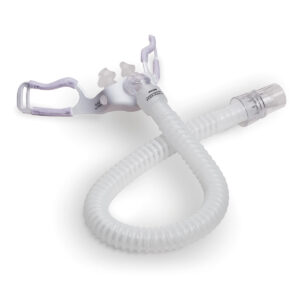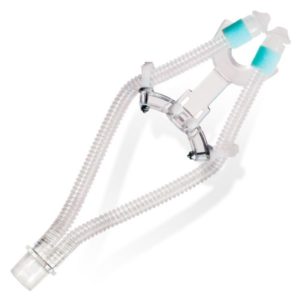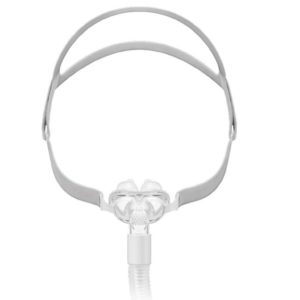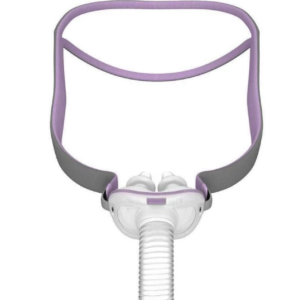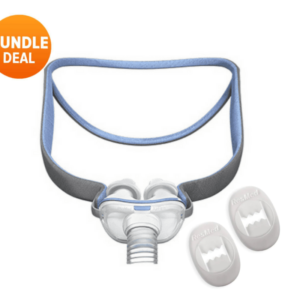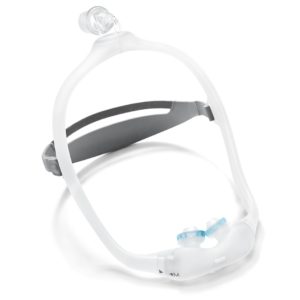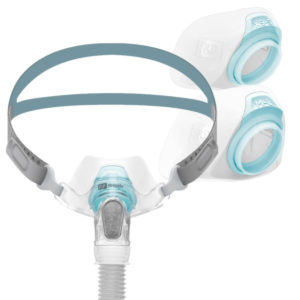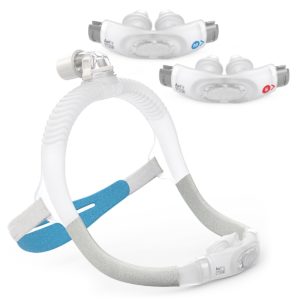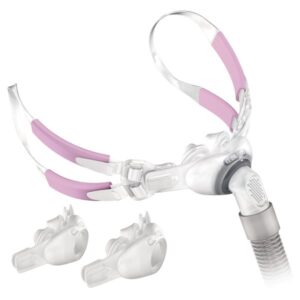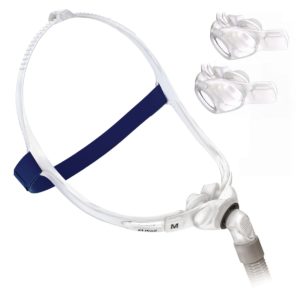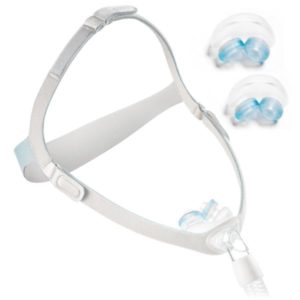Nasal Pillows Masks
Philips Respironics GoLife For Her Nasal Pillows Mask with Headgear- FitPack
FitPack Masks
Nasal Pillows Masks
ResMed AirFit™ P30i Nasal Pillow CPAP / BiPAP Mask with Headgear FitPack
Nasal Pillows CPAP Masks
The Nasal Pillows Style CPAP & BiPAP Mask provides even flow pressurized air that both the nose and mouth can inhale. It’s also held in place with the similar style of headgear used for nasal masks. has the smallest type of CPAP mask available on the market today. These soft cushions rest at the opening of the nostrils, secured by gentle headgear and have the least amount of contact points with the face. It goes one step further and actually seals your nostrils by fitting directly onto them. The Nasal Pillows The CPAP machine delivers air pressure directly through these cushions into your airway.
The Nasal Pillows CPAP Mask is right for you if,
-
- An Active Sleeper and need a secure fit CPAP Nasal mask for when tossing and turning in bed during sleep.
- Experiences soreness or red marks on the bridge of the nose from other CPAP Masks that rest on the bridge of the nose.
- Wears reading glasses, loves to read or watch TV before bed, or prefers an open view of sight.
- Has Facial Hair that can interfere with the mask seal and cause air leaks.
- Gets a Claustrophobia feeling - Minimalist and lightweight design, with less headgear to wear compared to other mask types.
- Dislikes having materials touching their face, making it suitable for those with claustrophobia.
- Breathes through the nose and constantly experiences air leaks. The Nasal Pillow Mask provides direct airflow to the upper airway, reducing the likelihood of leakage.
The Full Face CPAP Mask may not be right for you if,
-
- Tends to sleep with the mouth open or wakes up in the morning with a dry throat.
- Experiences frequent sinus congestion, allergy, or flu symptoms.
- Has a deviated septum or other chronic nasal blockage.
- Has higher prescribed pressure settings due to the direct delivery of pressurized air over 10 or 12 cm H2

